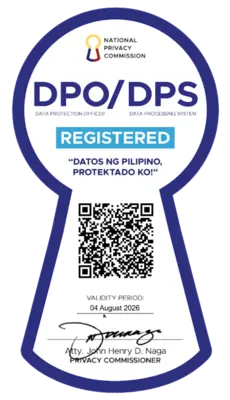31 digital hubs launched to boost internet access in public schools

In a major step toward closing the digital divide in education, the Department of Education (DepEd) and the Department of Information and Communications Technology (DICT) are ramping up efforts to connect all public schools to the internet by the end of 2025.
The launch of 31 new digital connection points under Phases 2 and 3 of the National Fiber Backbone (NFB) is seen as a key driver in this push, expanding access across Luzon, Visayas, and Mindanao.
President Ferdinand "Bongbong" Marcos Jr. led the official launch of the NFB expansion on July 7 in Leyte, affirming the administration’s goal to bring affordable, fast, and reliable internet to underserved communities and schools, especially in geographically isolated and disadvantaged areas (GIDAs).
“Mahigit 600 tanggapan ng gobyerno ang magkakaroon ng mabilis at maaasahang internet. Mapapakinabangan ito ng halos 17 milyong Pilipino. At kapag buo na ang National Fiber Backbone, maaari pang mabawasan ang gastos sa mga telco at internet providers dahil may sarili na tayong imprastruktura. Mas abot-kayang internet, mas maraming Pilipino ang konektado,” said Marcos.
(More than 600 government offices will have fast and reliable internet. Around 17 million Filipinos will benefit from this. And once the National Fiber Backbone is complete, we may even reduce costs with telcos and internet providers because we will have our own infrastructure. More affordable internet means more Filipinos connected.)
Among the top beneficiaries of the expansion are public schools, many of which still struggle with poor or no internet connection. Of the nearly 47,000 schools nationwide, thousands remain unserved or underserved, especially in remote provinces.
With the addition of 31 new connection hubs, more schools will gain access to critical bandwidth for learning, teaching, and administration.
DepEd said the fiber backbone is already transforming learning environments under its Digital Bayanihan Project, launched in partnership with DICT. The program targets last-mile schools with free WiFi, mobile data, and digital support.
One such success story is Bay-ang National High School in Ajuy, Iloilo. Previously labeled a “dead spot,” the school now has working internet access for the first time. Teachers are able to submit online reports, conduct ICT classes, and access e-learning tools on campus.
Aside from fiber expansion, the government is deploying short-term digital solutions. The Bayanihan SIM Program began its rollout on June 27 in Bulacan, Zambales, and Quezon, providing free SIM cards with mobile data to over 113,000 learners, 3,800 teachers, and 357 public schools.
Looking ahead, the PSIP Connect project—part of the broader PPP for School Infrastructure—will deliver devices, solar-powered internet solutions, and satellite connectivity to underserved schools beginning in the fourth quarter of 2026.
Education Secretary Sonny Angara emphasized that digital connectivity is a non-negotiable part of delivering quality education in the 21st century.
“Hindi natin mapapalago ang kalidad ng edukasyon kung hindi konektado ang ating mga paaralan sa mundo. Sa direktiba ni President Marcos at sa tulong ng DICT at ng buong pamahalaan, isinusulong natin ang digital inclusion na tunay na may malasakit,” said Angara.
(We cannot improve the quality of education if our schools are not connected to the world. With the directive of President Marcos, and the help of DICT and the entire government, we are pushing for digital inclusion rooted in compassion.) —LDF, GMA Integrated News




